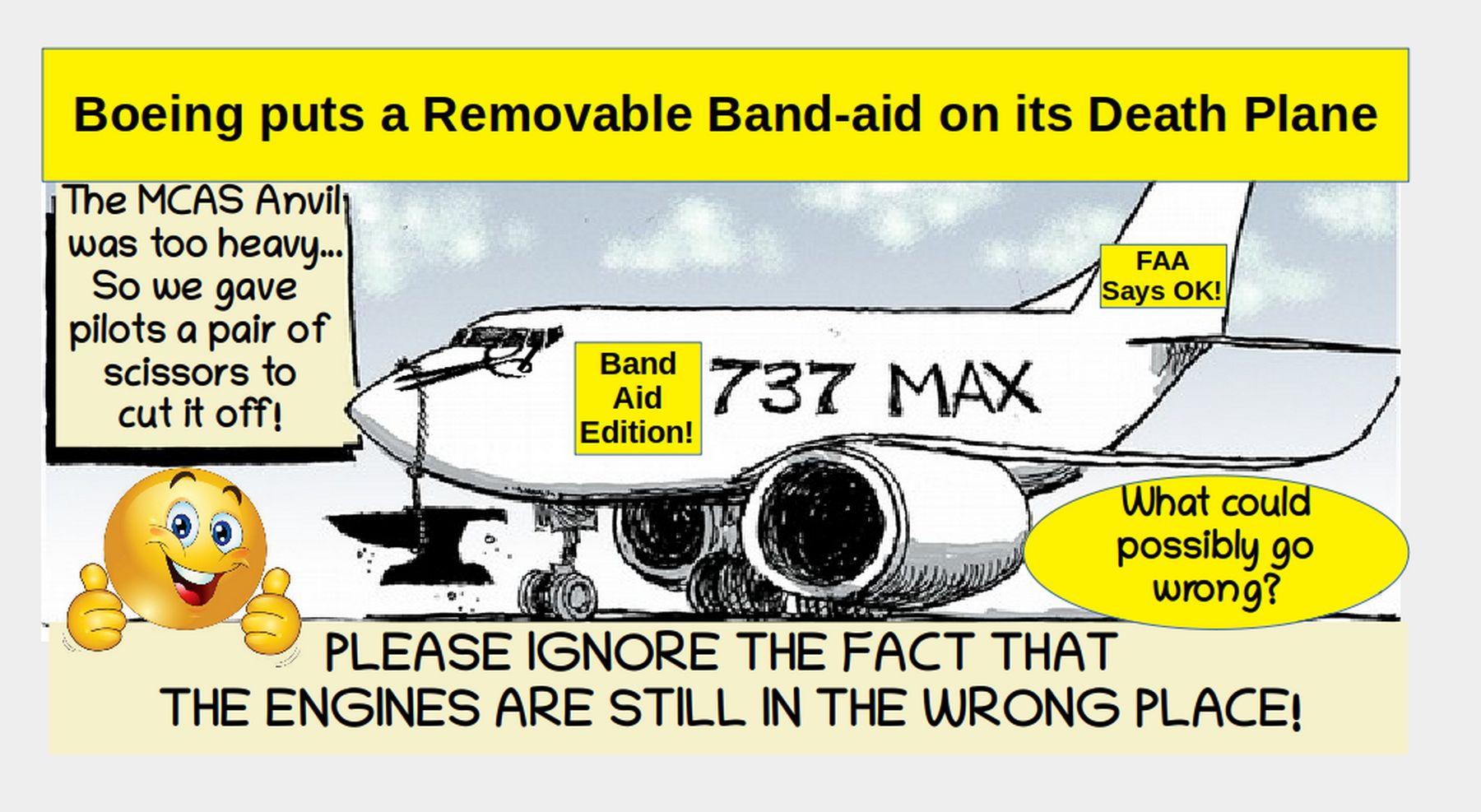Ralph Nader April 2019
"This airplane is designed by clowns who in turn are supervised by monkeys."
Boeing company employee internal email

On May 25, 2020, I wrote a 109 page report explaining why the real problem with the Boeing 737 Max is that the engine is too high and too far forward – making the plane extremely unstable and requiring a software fix called MCAS to keep the plane from a nose up stall. I predicted that the FAA would not require Boeing to address this real problem of the engine being in the wrong place and instead would allow Boeing to merely add yet another software patch. On August 3, 2020, the FAA issued two reports – both of which signed off on Boeing’s software patch band-aid solution. In this update, we will explain why the new Boeing software patch can actually increase the risk of another plane crash.
Background Links
We will be referring to the following three reports. If you have not read them yet, you should take a few minutes to read them in order to better understand the safety issues involved as well as the proposed Boeing Band-aid solution. Here is a link to my original 109 page Report:
https://www.turningpointnews.org/why-boeing-is-going-special-report
Here is a link to the August 3 2020 FAA Airworthiness Directive:
https://www.faa.gov/news/media/attachments/19_035n-R3-8-3-20.pdf
Here is a link to the August 3 2020 FAA Summary Report:
https://www.faa.gov/news/media/attachments/737-MAX-RTS-Preliminary-Summary-v-1.pdf
Key Band-aids applied to the new 737 Max
The two most surprising aspects of the new 737 Max compared to the version that killed nearly 400 people in a matter of months are:
#1: The initial power of MCAS to tip the Max nose down in the event of a nose up stall was not reduced.
The original version of MCAS was 2.5 degrees in the back of the plane over 10 seconds and the new version of MCAS is still 2.5 degrees in the back of the plane over 10 seconds. Because there is an 8 to 1 lever arm from the back of the plane to the front of the plane, this means that MCAS will drop the nose of the plane 20 degrees (8 times 2.5) over just 10 seconds. This fact alone – that the power of MCAS was not changed - vindicates the claim I made in my original report that the Max was so unstable that any reduction in the power of MCAS would only increase the chances of a nose up stall and plane crash. Boeing is basically admitting that the most powerful version of MCAS is required to prevent a nose up stall and crash.
#2 Despite the admission that MCAS is essential to prevent a nose up stall and crash, Boeing added several conditions that result in MCAS being automatically turned off for the duration of a flight.
For example, if there is a disagreement of more than 5 to 10 degrees between Angle of Attack indicators, MCAS will turn itself off for the rest of the flight. Here is a quote from the Air Worthiness Directive:
If the difference between the AOA sensor inputs is above a calculated threshold, (11) the FCC would disable the speed trim system (STS), including its MCAS function, for the remainder of that flight.
(11) More than 10 degrees difference for more than 10 seconds.








